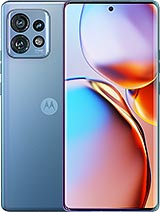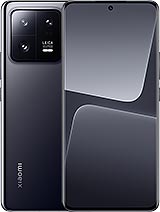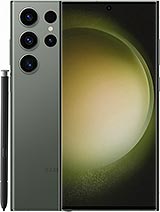Google Pixel 8 Pro review
Pure Android 14 with Pixel-exclusive features
If you are looking into the Pixel family, you are probably into that pure Android experience, as Google intended it. However, over time, the OS pre-loaded on Pixel phones comes with some exclusive features only for Pixel users. This is still true in 2023 as the company announced the duo with new functionalities.
Perhaps one of the most important bits during the announcement was Google's commitment to long-term support for this year's Pixel 8 family. The two handsets will receive major OS updates and security updates for the next 7 years. That's more than any other smartphone maker on the market. Even Apple's cap is 5 years. Google also assured that it will provide spare parts for its phones for that long as well, because software updates don't mean much if you can't change a broken screen.
As before, Google strongly emphasizes the software experience as a whole. While the Pixel 8 and 8 Pro won't surprise you with some ground-breaking and flashy features, they will potentially make your life easier, as long as you live in the right country. Just like its predecessors, the Pixel 8 and 8 Pro are the true definition of a smartphone as they offer clever features like call screening, real-time translation and a powerful image editing toolset. All of these features are possible thanks to Google's improved NPU accelerating AI-related tasks. Keep in mind, that some features require persistent internet connection as some of the AI-related features are offloaded to Google's cloud computing. But before we dive into the "smart features", let's see if there are any major changes to Android 14 as a whole.
There's no significant change over Android 13 in terms of overall look and UI design. If you are used to stock Android, you will feel right at home. The lock screen, home screen, notification shade, quick toggles, recent apps and the app drawer all remain unchanged. Except for this tiny little detail - the notification shade now has a list of apps running in the background, which could be useful for tracking apps ruining your battery life.
![]()
![]()
![]()
![]()
![]()
![]()
Lock screen • Home screen • Notification shade • Quick settings • Active apps • App drawer
However, Google is changing the way you can customize the UI. For instance, the lock screen is now much more customizable. You can set different clock styles and change the shortcuts that appear at the bottom corners on the left and right.
With the new generative AI features, creating images is easier than ever, and a new feature allows you to create your own unique, high-quality wallpapers. The system menu offers 12 main styles to work with and endless prompt combinations of words and colors.
![]()
![]()
![]()
![]()
![]()
![]()
AI-generated wallpapers and system theme
Some language and region-related improvements are also at hand, with Android 14 allowing you to choose a certain regional language but still use a different measurement system, date and week formats, for example. Let's say you are a European living in the US. You can still select the US as your main region but use the (vastly superior) metric system. Language selection on per-app basis is also possible now.
Although Google doesn't emphasize those as much, the software team is also bringing some under-the-hood changes. Background management of apps, foreground services, user-initiated downloads and the internal broadcast system are all being managed differently in pursuit of better efficiency and longer battery life. Still, we wouldn't expect any truly tangible changes as these are minor improvements to the OS.
Google has been focusing on improving privacy and security for the last couple of Android iterations, and Android 14 is no different. Perhaps the biggest impact is on older apps. Going forward, Android won't support apps developed for Android 5.1 Lollipop and older. So, old apps and games that haven't been updated in a while will stop working on your new Android 14 phone.
Until Android 13, sending images to someone has meant allowing access to your entire gallery to the messaging app, but with Android 14, you can select only a couple of images or just one. This is another layer of protection against prying eyes. And if an app changes its privacy policy, Android 14 will bring out a new dialog asking you to give the app permission one more time, taking into account the new privacy policy changes.
Other notable changes to Android 14 include lossless audio support when using wired headphones and 10-bit HDR handling of images, so JPGs will retain more information out of the sensor and will be displayed accordingly in supported apps on Android 14 devices.
The updated NPU enables real-time, system-level translation. The Live Translate works in most apps and languages when it's written text. However, language support is significantly limited in interpreter mode. This is understandable because the AI algorithm requires more resources and better language recognition when natural human speech is involved.
The interpreter mode is perhaps the most interesting feature of Live Translate as it can translate a live conversation between two people, as long as they speak the supported languages. The transcription can later be used to be translated into more languages.
![]()
![]()
![]()
![]()
Live translation and interpreter mode
In messaging, on the other hand, the process is pretty straightforward. Once you receive a text message from someone in a different language, the system automatically detects it and offers a translation. The AI can also help you write messages in a certain style too.
![]()
![]()
![]()
![]()
![]()
Messaging translation and live caption translation
The Call screening feature was introduced last year and now Google says the new chip makes the experience better and faster. For instance, the Google Assistant can take a call for you, understand the context of the conversation and offer quick responses. It's a pretty neat functionality if you are on the go and don't have time to engage in a full conversation. Call screening also works when calling businesses requiring you to select options from a menu using the dial pad. The assistant will transcribe all options, which the robot lists on the screen, and let you choose. No more guessing and remembering options from the voice menu. The dialer will even suggest calling at another time if you are calling the business at a busy time.
Other AI-based features include the ability to transcribe a whole real-life conversation with speaker labels, even if the phone is in your pocket. It's a built-in function of the audio recorder app. It works really well for English speakers, and it might come in handy to journalists or people often making voice memos. There's also a search function inside the app that would help you find certain parts of a conversation. The new transcriber is more powerful than before - it's faster and removes all the "umms" and "uuhs" from your speech and records only real words.
The AI can also extract text and images on the go. In the recent apps menu, you will find two buttons - one for screenshot and one called "Select". Once you tap it, you can select, copy, share or select text from the screen. You can even extract images using this feature. Interestingly, the selection also works in the default recent apps menu with a tap-and-hold action.
Additionally, the Google Assistant can summarize a whole article into a few bullet points when opening an article in Chrome. This is seemingly Google's Bard-powered feature, but we couldn't make it work in our region.
Lastly, the more powerful AI algorithm is now ported to Google Photos. And no, we are not talking about the object eraser or the background blur features that come with the Google One subscription. Under the Edit menu in Photos, there's now an additional button for the so-called Magic Editor. It offers more advanced functionalities than the standard Edit. You can remove objects that are not human, move them around, change the sky, etc. The editor will offer three variants to choose from, but you can generate more if you don't like those. You can also remove background noise from videos, which works surprisingly well in some scenarios.
One feature unique to the Pro Pixel 8 is the thermometer, mounted in camera visor on the back. You can use it to read the temperature of an object by pointing the thermometer window at the object and keeping it within a 5cm distance.
You do need to pre-select the type of object you'll be scanning from the app, and no - it doesn't work for reading a person's temperature, at least not yet. That said, the welcome screen of the Thermometer app does look somewhat unfinished with just a single card for 'Object temperature' measurement, so perhaps there's a regulatory hurdle of sorts to be overcome before another card with 'Person's temperature' shows up in there.
All in all, the software feels buttery-smooth with no hiccups and has tons of smarts for you to play with. Unfortunately, most of the features weren't available in our region, so we had trouble trying them out, so keep that in mind when buying a Pixel as some functionalities won't be available in your region or language. And to finish on a high note, we really liked the haptics on the device, and there's a noticeable improvement in the fingerprint reader's performance - it's now faster and more accurate.
Benchmarks and performance
This year, the Google Tensor G3 chipset sits behind the wheel of both handsets, the Pixel 8 and 8 Pro. It's now based on Samsung's 4nm manufacturing process as opposed to last year's 5nm, which, in theory, means slightly better efficiency and lower operating temperatures. Arguably the most exciting bit about this SoC is that it incorporates a nona-core (9-core) CPU.
The CPU package has an unusual 1+4+4 core configuration. The main core is Cortex-X3 clocked at 3.0 GHz, followed by 4x Cortex-A715 cores ticking at 2.45 GHz, and 4x Cortex-A510 cores running at 2.45 GHz that are used for not-so-demanding tasks to save on some power. A new Immortalis-G715s MC10 GPU replaces the older Mali-G710 MP7, promising improved graphics performance as well.
The SoC also boasts Google's Titan M2 security chip and a new NPU for AI-related tasks. The latter handles the real-time translation features and the call screening features we mentioned earlier.
All versions of the Pixel 8 Pro come with 12GB of RAM. When it comes to storage, the very existence of a 128GB base version appears wrong, certainly for a top-end product like this one. While 256GB, 512GB, and 1TB versions do exists, we consider 256GB to be the only acceptable starting point at this level - and yes, the iPhone 15 Pro does start at 128GB, but at least the Pro Max's base version is 256GB.
The above charts do well to illustrate Google's approach to performance. On the one hand, the new Tensor G3 is indeed measurably more powerful than its predecessor, making the Pixel 8 Pro faster than the Pixel 7 Pro in all kinds of tasks - CPU and GPU-intensive workloads, with a particularly notable improvement in the GPU department. On the other hand, the competition is way ahead of the Google phone.
Pixel phones have never been benchmark warriors, and Google has often stressed that it tries to optimize its devices instead of ramping up performance. However, it doesn't sit well with us to see the Tensor G3 being outperformed by last year's Snapdragon 8+ Gen 1 and by such a big margin at that. In pretty much all tests, the Pixel 8 and 8 Pro outperform only last year's Pixel 7 family, but not the current crop of rivals.
Keep in mind, though, that if high-performance gaming isn't on top of your priority list, the Pixel 8 will do a great job in day-to-day tasks. The device performs excellently in non-synthetic benchmark scenarios.
Sustained load, on the other hand, might be a more relevant issue to look into. Previous Pixel generations have failed this test, but somehow, the Pixel 8 family is even worse at sustaining the CPU's frequency for long periods of time. Even the larger size of the Pro doesn't really help it much with heat dissipation under prolonged high loads.
Reader comments
- jiyen235
- 12 Mar 2024
- XQQ
It'd be fascinating to see what Google can do with a 1/1.56" sensor for the UW and telephoto and 1 inch for the main cam. 1k USD for this phone at 128 GB is laughable. But if they made a 1300-1400 USD phone with those specs and a 512 GB bas...
- Anonymous
- 04 Mar 2024
- gDf
The Xiaomi 14 Ultra's periscope camera has an effective lens diameter that is even 43% larger than the effective diameter of the 7 Pro's 116.5mm 48 megapixel (probably 48.8) camera. This means that theoretically, regarding diffraction, it w...
- thunderresistant
- 21 Feb 2024
- B}C
My P6 is also performing just fine. I'm talking about a slightly different thing ;)






